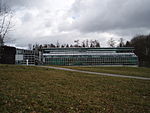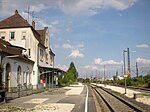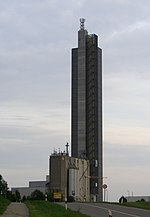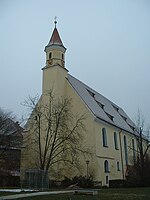Helmholtz Institute Ulm
Research institutes established in 2011Research institutes in GermanyUniversity of Ulm

The Helmholtz Institute Ulm (HIU) carries out research and development in the area of concepts for electrochemical batteries.
Excerpt from the Wikipedia article Helmholtz Institute Ulm (License: CC BY-SA 3.0, Authors, Images).Helmholtz Institute Ulm
Helmholtzstraße, Ulm Eselsberg
Geographical coordinates (GPS) Address Nearby Places Show on map
Geographical coordinates (GPS)
| Latitude | Longitude |
|---|---|
| N 48.42634 ° | E 9.96002 ° |
Address
Helmholtz Institut Ulm
Helmholtzstraße 11
89081 Ulm, Eselsberg
Baden-Württemberg, Germany
Open on Google Maps









